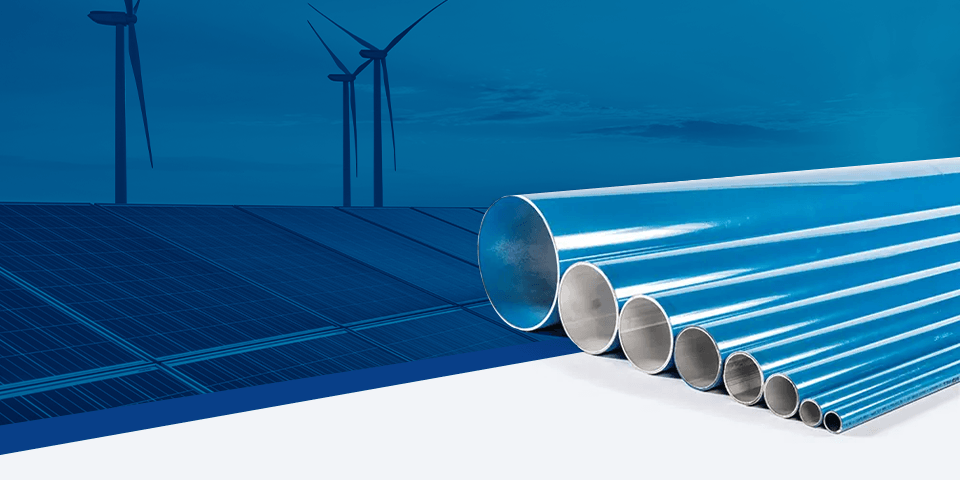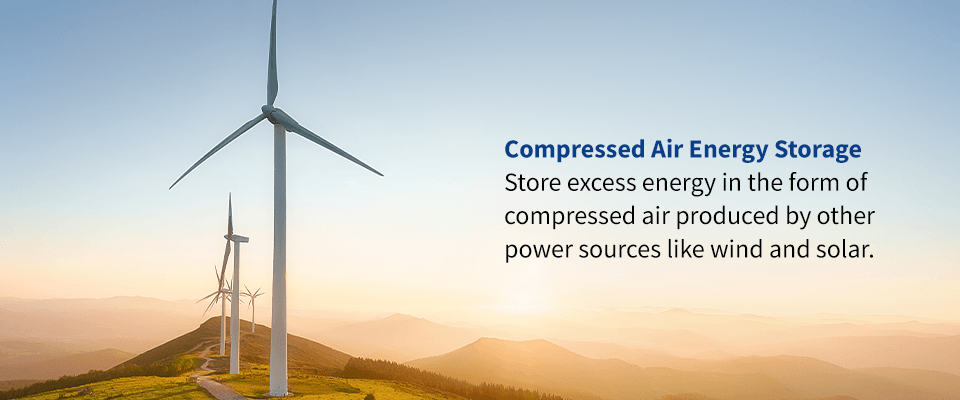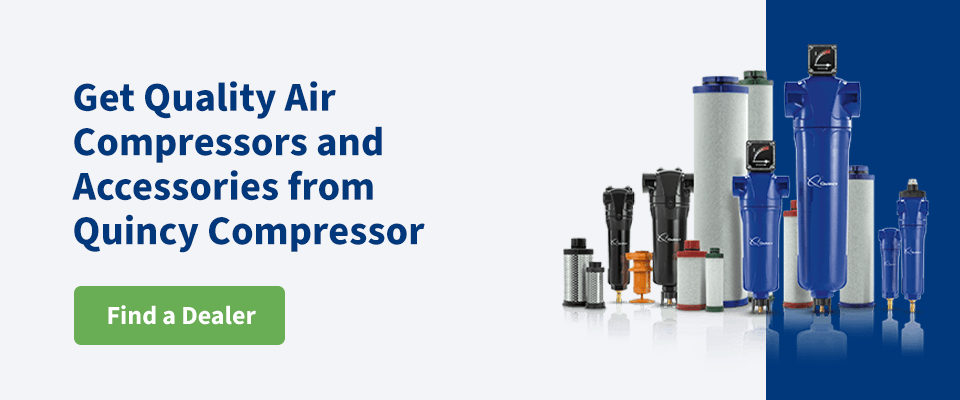
Energy storage systems (ESS) store excess electric energy during high-supply and low-demand periods to optimize energy use during peak-demand sessions. Energy storage makes the grid system more secure, flexible and reliable than traditional energy backup solutions like solar and wind power. It boasts numerous environmental and economic benefits, including increased production of renewable energy and decreased carbon emissions.
It also saves you money because it reduces the use of inefficient energy-generating units that only run at peak times and prevents costly business disruption caused by power outages. Most energy storage methods can store energy anywhere along the grid to make commercial and industrial facilities more resilient. They’re also customizable to meet your unique needs. Below, we get into the different types of energy storage methods and why compressed air energy storage is preferable.
How Is Energy Stored?
Energy storage occurs when there’s a greater supply of electricity than demand. The excess electricity is converted to a different form, such as kinetic, chemical or thermal energy, which is often easier and more convenient to store. It’s stored and utilized later when there’s greater demand than supply or the most expensive, making the power grid efficient and reliable.
Types of Energy Storage Systems
There are many types of electrical energy storage systems. Below, we discuss some common ones, highlighting the top advantages and disadvantages of each.
1. Pumped Hydropower Storage (PHS)
Pumped hydroelectric storage accounts for 94% of all the stored energy globally. With PHS, surplus electricity generated during low-cost, off-peak electric power periods is used to pump water from a lower reservoir to an up-hill reservoir. When the demand increases, the water flows down to a lower basin via gravity. As the water flows, it turns turbines that drive a generator rotor that converts the hydropower into electrical energy.
While the infrastructure for hydropower plants can last for decades, they’re expensive to construct and limited by topography and geographical conditions. It’s also not entirely efficient because it loses quite a bit of energy as the water is being pumped. PHS is still a good option if you’re looking for a renewable electricity source that doesn’t produce greenhouse gases.
2. Flywheel Energy Storage
Flywheel energy storage systems convert electric energy into kinetic or rotational energy and store it in this form. The flywheel system is a type of rotor that consists of a mass of wheels that spin around an axis at high speeds to convert electricity to kinetic energy. When the need arises, the flywheel sends the rotational energy through the spinning wheels again, which act as a generator to convert it back to electrical energy.
Most flywheel systems have magnetic bearings around the high-strength composite rotors to prevent energy loss. They also operate in a vacuum to decrease drag and are able to produce high amounts of energy by rotating at speeds of up to 60,000 revolutions per minute.
Flywheel energy storage systems have a modular design that requires minimal maintenance, but they have a small capacity and short discharge duration. Its main disadvantage is that external shocks and mechanical stress can lead to failure.
3. Battery Energy Storage
Battery energy storage systems (BESS) use various types of rechargeable batteries to store electric energy from renewable sources, like wind and solar. BESS, used for large-scale operations, utilizes lithium-ion, lithium-iron iron or lead-acid batteries to store operations until needed. Flow (fuel cell) batteries are another BESS option you can use. They substitute solid electrodes with energy-dense electrolytes such as bromine-hydrogen and hydrogen lithium separated by a membrane that facilitates ion exchanges as the liquid circulates.
The electric energy is stored as direct current (DC) produced by photovoltaic (PV) modules. However, this has to be converted back to alternating current (AC) using an inverter for domestic purposes. Battery energy storage systems are expensive because you need more to purchase the power conversion system (PCS), which includes the inverter. Additionally, they have a shorter life span with higher maintenance requirements.
4. Compressed Air Energy Storage
Compressed air energy storage (CAES) systems store excess energy in the form of compressed air produced by other power sources like wind and solar. The air is high-pressurized at up to 100 pounds per inch and stored in underground caverns or chambers. The air is heated and expanded using a turbine before being converted into electricity via generators when the power supply is reduced and demand is high.
CAES systems are suitable for large-scale electricity storage needs. They can also be used to power pneumatic tools for various applications and industries, including woodwork, furniture assembly, construction and welding. While they’re less efficient than battery and hydropower energy storage systems, CAES systems boast a host of other advantages.
Advantages And Disadvantages Of Compressed Air Energy Storage Over Other Energy Storage Sources
The main advantage of compressed air energy storage is that it’s more affordable and easier to implement than other energy storage solutions.You also save quite a bit on installation and implementation when compared to solutions such as PHS. Other compressed air energy storage benefits include:
- Unlike the other energy storage solutions, CAES is not limited by application. It can be used for small-scale energy use as well as large-scale energy grids.
- Compressed air energy storage is more sustainable and less environmentally harmful because it does not require chemicals or other toxic materials to operate.
- It’s also simple to operate and requires minimal maintenance.
- Compressed air energy storage capacity is higher than any other energy storage system.
- CAES systems offer “black start” capabilities that enable operations to continue without an external power supply in case of power failure.
While seemingly perfect, CAES systems have a few disadvantages that limit their extensive adoption. Some of these disadvantages include:
- Significant energy loss, especially during compression and decompression of the air, limits the compressed air energy storage efficiency compared to other energy storage sources.
- CAES relies on energy from other sources to expand and decompress the pressurized air. This is less than ideal, especially when fossil fuels are used to facilitate the heating.
Get Quality Air Compressors and Accessories from Quincy Compressor
Compressed air systems can help you power a facility’s machinery, tools and other resources needed to perform essential tasks. Quincy Compressors is a global leader in air compressor and industrial air pump technology that’s been in operation since 1920. We provide you with a rich inventory of high-quality compressors you can count on for decades of use in major industrial environments.
We also manufacture replacement parts for air compressors sourced from leading air compressor brands from around the globe. Browse individual air compressor pages on our website for detailed specifications or find a dealer near you to purchase the air compressor that suits your needs.



